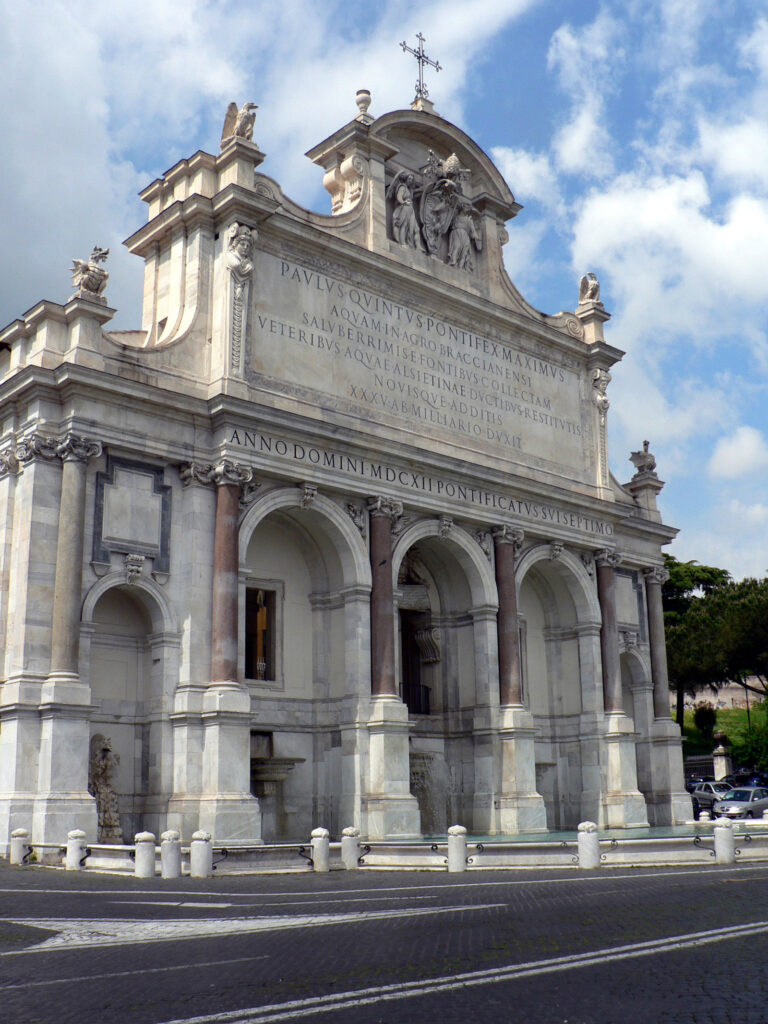The Acqua Paola Fountain was built between 1608 and 1612 at the behest of Pope Paul V Borghese, on a design by Giovanni Fontana and Flaminio Ponzio, to be the monumental termination of the Trajan Aqueduct, in whose construction ancient antiquities were used. After some work carried out in 1690, Pope Alexander VIII commissioned Carlo Fontana to restore the monument. It partly changed the appearance of the building, the arches of the elevation were opened and the basin with a lowered rim was added, replacing the original five granite basins. Later, in 1698, Monsignor Paolo Borghese, President of the Water Board, had the small columns connected by iron bars built to protect the basin.
During the battles to defend Rome, the fountain was damaged by French cannon fire in 1849 and restored in 1859. The structure is surmounted by an attic which contains the cisterns for the water that flows out and cascades into the large, mixtilinear basin in front of it. The main façade has five large arches framed by columns on a high base. The three central arches are wider and have rectangular openings, while the two smaller side openings are blind or closed. Above these is an inscription on an architrave. The attic is almost entirely occupied by the large inscribed plaque, while at the top is a metal cross between two vases.



